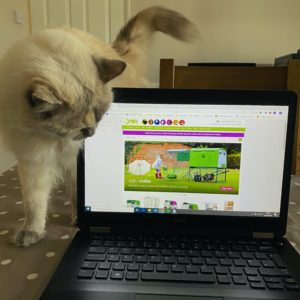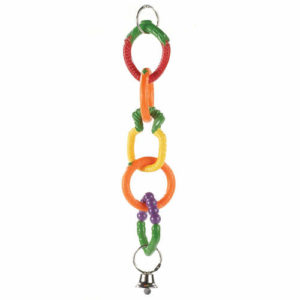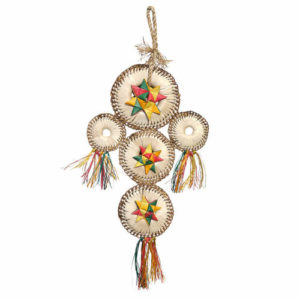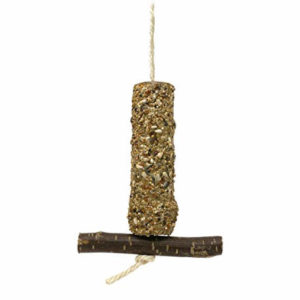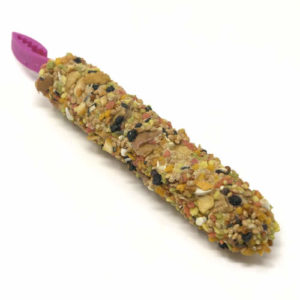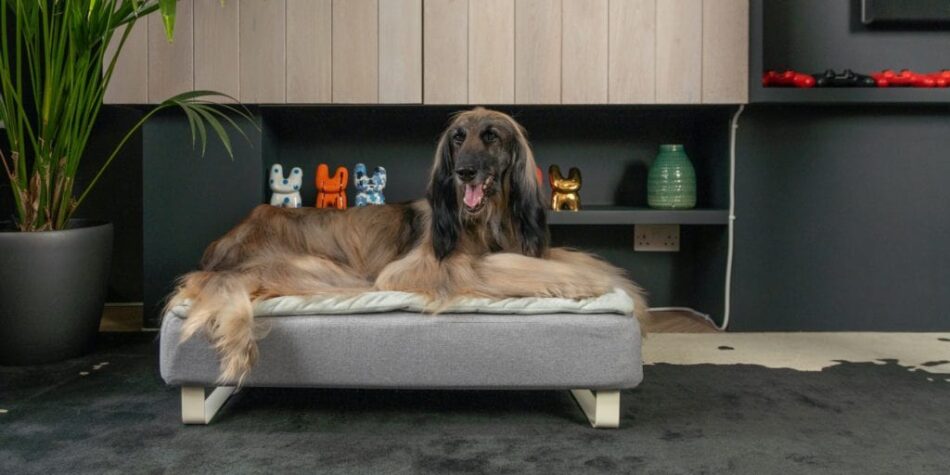
When choosing a dog – especially if it’s your first one – the key is to find a breed that complements your lifestyle. Like us, some dogs are happy to spend most of their time relaxing indoors, while others want to run half marathons every day.
So, think about your lifestyle, and then find the dog to match. Here are some helpful lifestyle and dog breed matches to help you narrow down the field.
Dogs for Sofa Lovers
Being an evening couch potato doesn’t necessarily mean you’re lazy – it probably means you’ve had a busy day at work, and need some downtime. Plenty of dog breeds fit this ‘couch canine’ lifestyle, including:
- Dachshund – these loveable ‘Sausage Dogs’ can actually damage their spines if they’re forced to take too much exercise. They will still need a morning walk, though!
- Greyhound – this one surprises people who don’t know the breed well. “Greyhounds?”, they say, “Surely all they want to do is chase hares at breakneck speed all day?” Well, yes, they can run fast; but their preferred lifestyle is actually long, lazy days, with a couple of short runs in the park.
- French Bulldog – they’ll be hyperactive for 20 minutes on a walk, and then they’ll be worn out. Lacking endurance, this makes them perfect for anyone who lacks time for long walks every day.
The popular lapdog breeds fall into this category too, including Chihuahua, Pug, King Charles Spaniel, Pekingese, Shih Tzu and Yorkie.
Dogs for Busy Outdoor Lifestyles
If you do lots of walking or running, there are plenty of high-endurance dog breeds that will just love keeping up with you every step of the way.
- Dalmatian – these loveable hounds will find 101 reasons to run and play all day. Whatever you’re doing outdoors, they’ll be with you every step of the way.
- Border Collie – possibly the dogs with the busiest work ethic, they will happily be hyperactive from dawn to dusk. If there’s no work on offer, they’ll find it for themselves. That ball game isn’t just a game, it’s a job, and the Border Collie will make sure it’s done properly – all day long, if needs be!
- Husky – a breed that was developed to pull heavy sledges for hundreds of kilometres is not going to be content with anything but a busy lifestyle. These dogs need lots of exercise – as many miles a day as you can give them. Not for the faint-hearted!
Many other larger breeds suit active lifestyles, including German Shepherd, Pointer, Boxer and Labrador Retriever. Some smaller dogs pack an energy punch, too, and the Boston Terrier and Jack Russell, for example, will be able to keep up with you no matter how long the journey home is.
Child’s Play – Best Dogs for Kids
Although children should not be given full responsibility for a pet dog, there are plenty of breeds that are very child friendly.
- Labrador retriever and Golden retriever – these are probably the perfect family dogs. Retrievers are gentle and loving, and treat children with a mixture of respect and parental care. They’re incredibly soft and good natured.
- Irish (or Red) Setter – this breed seems to have been developed to play with children! Playful, but gentle, children often form very tight bonds with this wonderfully handsome dog.
- Old English Sheepdog – when they’re not selling paint, these dogs – so often called ‘Dulux Dog’ that the name has become semi-official amongst dog owners – love nothing better than chilling with the kids. They’re gentle giants.
There are plenty more dogs in this category. The Newfoundland, for example, is even more giant than the Old English, and just as gentle. Boxers and Beagles are good with the kids too – as long as they’re well trained from an early age.

Dogs for People Allergic to Dogs!
Don’t despair! Your pet-induced sneezing and asthma doesn’t mean you can never be a dog owner. The thing you’re allergic to is a protein found on animals’ skin, and/or shed hairs. Although no breed is officially hypoallergenic, the commonest ones in families where allergies are a problem are:
- Poodle (both full size and Toy)
- Schnauzer
- Basenji
- Bichon Frise
- Samojed
- Shih Tzu
This is not a precise science, and some people are definitely more “allergic” than others. Many people who sneeze and wheeze at most dogs find that they are okay with Yorkies and Westies, even though these have longer hair than the average hound. At the same time, the short-haired Boxer can cause strong allergic reactions in many sufferers.
The key here is to spend some time with the breed before making the decision to bring one home.
The takeaway message is clear – there are many dog breeds out there, with many different personalities and requirements. Matching those traits to your own lifestyle and circumstances is the sure path to finding the perfect pet.
This entry was posted in Dogs on July 31st, 2020 by linnearask

While it’s true that most dogs can swim, not all of them actually enjoy it. Some dogs’ idea of swimming involves paddling for dry land as quickly as possible, while some take to the water as if they were otters in a previous life.
With some breeds, the clue is in the name. The Irish Water Spaniel and the Portuguese Water Dog, for example, love taking the plunge, as do Poodles, Newfoundlands, Setters, Retrievers and many more. Some dogs, however, are simply not built for swimming. Dachshunds, with their short legs, and Pugs and English Bulldogs, with their short necks and poor breathing, struggle in water.
When confronted with lakes and rivers on a walk, the dog will decide for itself whether or not it fancies a quick dip. In a garden pool, however, you need to be aware of the various safety and hygiene issues, because at some point your pet is bound to take to the water.
Mastering the Doggy Paddle
If the pool is a public one, dogs will simply not be allowed, so safety issues don’t arise. Pools in people’s gardens, however, become just as much a part of the dog’s playground as the humans’. Rule number one for pool owners – or for owners who visit friends with dog-friendly pools – is to make sure your dog is safe in the water.
A weak swimmer will tire very quickly and can soon get into trouble if unsupervised. Training your dog to swim to safety is therefore very important. Using your usual “Come!” command will usually work well. For smaller dogs, or if the pool is high-sided, a ramp should be attached to the side to allow the dog to clamber out. If the pool has steps, make sure the dog knows where they are. If the pool is large, make your dog jump in from different points, and guide them to the exit each time, to make sure they have a clear mental map of how to get out.
Another popular option is a dog life-jacket, which will allow your pet to swim while preventing it from sinking fast if things go wrong. If you never leave the dog unsupervised, these shouldn’t really be necessary; but if you are having a busy afternoon, your eye might not always be on your pet, so a dog flotation vest is great for ensuring peace of mind.
Some dogs really take to floats and inflatables (claw-proof ones made specifically for dogs, ideally). They can use them to take a break from paddling, or can simply lie on them like a human on a sun lounger.
If a dog gets itself into serious difficulties and needs rescuing, knowing how to administer CPR (Cardiopulmonary resuscitation) can save the pet’s life. There are tutorials available for this online, or you could ask your vet for advice.
 Don’t Drink the Water
Don’t Drink the Water
Dogs can quickly overheat if the sun is beating down, and they may naturally take to water to cool down. Swimming is hot business, though, and it’s far better for your pet to cool down in the shade with some fresh water to drink.
And that’s another hazard – a hot, thirsty dog in a pool will do what come naturally and drink some of the pool water. If they lap up too much of the chlorinated water, they may become sick. Again, providing some fresh water somewhere cool and shaded will prevent them drinking from the pool.
Just like a human, a dog who has spent time in the pool will need rinsing off, to remove the potentially irritating chlorine and other chemicals from its fur, eyes and skin.
Your Dog Loves the Pool, But Does the Pool Love Your Dog?
There are three major issues for a swimming pool used by dogs: bacteria, hair, and wear & tear.
The bacteria is associated with poo and wee. The dog doesn’t need to actually relieve itself in the pool for these contaminants to be released into the water. However, as long as your pool is properly maintained and chemically treated, the bacteria will be killed, so this should not be an issue.
The hair factor is more of a problem. Dog hair will accumulate in the pool filter surprisingly quickly if your pet sheds a lot. A good brushing before swimming will help, but you will still need to clean the filter and other pool machinery more often than you would with human-only swimmers.
Wear and tear is an issue with doggy paddlers because of their claws. They will scrabble at the sides of a pool, and at the bottom of a shallow area. A pool lined with plaster, pebbles or tile will withstand the clawing, while plastic or vinyl-lined pool may spring a leak. You should also bear in mind that dog claws and children swimming in the same pool may be asking for trouble, too.
Follow these simple guidelines and precautions, and pools can be enjoyed by dogs and owners alike. But don’t force the issue – some dogs love the wet stuff, while others prefer to keep their feet on dry land.
This entry was posted in Dogs on July 29th, 2020 by linnearask
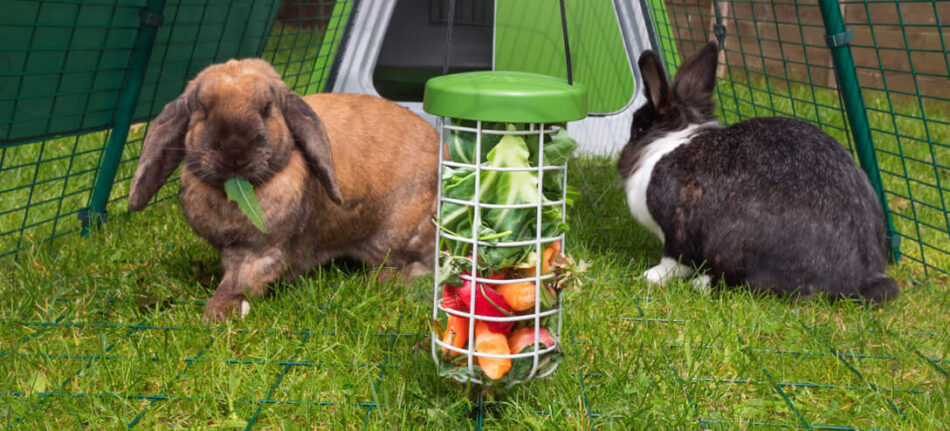
Some pets are pretty obvious with the way they show love and affection. A dog might be the best example of this; with a wagging tail, smiling face and licking tongue, dog owners rarely have to guess if their dog is excited to see them when they get back from work in the evening.
With rabbits it’s a bit more complicated. First of all, it often requires a bit more work to get your pet rabbit to trust you. As prey animals, they are naturally shy and cautious, and it may take a while before they warm up to new people. However, once they know you and trust you, they are extremely affectionate animals that love spending time with their owners. They might just have slightly different ways of showing it!
If your rabbits do all or some of the following things, you can be sure that they feel genuine affection for you.
They stop being nervous
When the rabbit is new to you, it’s normal that they seem skittish or jumpy. This is to be expected, and it may take a while before the rabbit realises that they are safe in their new home.
The first signs that your rabbit is warming up to you is that they stop some obvious nervous behaviours. Maybe they no longer jump back when you reach your hand towards them with some treats, stop running into the hutch whenever you approach or start to relax their body language. These may seem like small things, but they are steps towards your bunny feeling true love for you.
They groom you
When two rabbits live together, they lick, nibble and groom each other as a way of showing love and affection. If your rabbit likes you, he or she might start to lick you or your clothing, nudge your arm or nibble on your finger. This is a sign that you are seen as part of the rabbit’s family, and that they care about your health and cleanliness.
They want to be stroked
If you rabbit comes up to you and starts pushing their head against your hand or put their head on your arm it’s a sign that they love you and want to spend time with you. It means your rabbit trusts you know what you’re doing and won’t hurt them, and is a true signal that they love being around you.
They come and lay next to you
A rabbit that approaches you while you’re spending time with them in their run and lays down next to you is showing extreme trust, especially if they’ve got their legs sprawled out under them. This is a very vulnerable position to be in, so it’s clear that your rabbit trusts that you will look after them.
They run around your feet
The closest you will probably get to a dog jumping up to greet you when you get through the door is your rabbit running in circles around your feet, sometimes doing figures of eight between your legs. You might have seen this behaviour when you approach your rabbits with food or yummy treats, but many will also do it just out of excitement of seeing their favourite human.
They purr
Although it’s actually not purring in the same way as cats purr, but a grinding of the teeth that makes a soft humming sound and causes the rabbit’s head to vibrate slightly, it’s a clear sign that your rabbit is content. Normally this occurs when you’re stroking or grooming your rabbit, a time when your pet doesn’t have to worry about anything.
They do a binky
A binky can be described as a jump up in the air with the legs stretched out. It’s an expression of excitement and exhilaration, and sometimes you will see your rabbit doing this in your company. We dare you not to smile when you see a binky!

This entry was posted in Rabbits on July 27th, 2020 by linnearask

2020 has certainly been an unusual year for most of us so far. Here at Omlet we’ve been working from home since the end of March, and many of us have spent more time than normal with our chickens, dogs, cats and other pets. To get an idea of how pet ownership has affected lockdown, we decided to ask our followers how their pets had helped them cope with these strange times. Here is a summary of the results:
88% of people agreed that staying at home has been easier with a pet! It’s no news that pets are great emotional support during difficult times, and apart from that they keep you busy. If you keep chickens you have to go out in the garden a few times a day to refill food and water or check on your girls, and if you have a dog they must be walked. Having routines is a great way of keeping structure when things are uncertain, and will benefit both physical and mental health, so it’s no wonder that 88% of people are thankful for having a pet throughout lockdown!

Nearly 2 out of 3 people thought that their pets had enjoyed seeing more of their owners, which shows how little they actually require from us. It doesn’t have to be long hikes or elaborate playtime setups, just having you around is enough for most pets. Only 0.5% said that their pets seemed annoyed or tired by the additional human interaction – can we guess that these people own independent cats by any chance?
1 in 4 people said they spent more time teaching their pets tricks during lockdown.
Many of us have been working from home, and tried to master all the challenges that come with setting up a home office. For people with pets this challenge might have been even bigger. Whether by squeaking guinea pigs, clucking hens or barking dogs, 75% of people said that they had been easily distracted from work by their furry or feathery friend. 50% had also had a video called interrupted by their pet.
76% of everyone who took the survey said they would like to work from home more often in the future so they can spend more time with their pets. As we have already established, our pets have also seemed happy to have us at home more, so it’s certainly a setup that would benefit both pets and owners.
Not as many people would like to bring their pets into work with them; only a third said they’d like to let their pet meet their colleagues. We’re guessing this might have to do partly with what animals people have got, and how convenient it would be to take them to work. Sure, we’ve heard of office dogs, but is an office chicken taking things a bit too far?
Out of the people who would like to take their pet to work with them in the future, nearly two thirds believed that their boss would not allow it. If you reckon your boss would say no, let them know that studies done with office dogs show that having a four legged friend running between the desks proved to boost morale, increase job satisfaction and reduce stress within companies and organisations.

Terms and conditions
Promotion of £10 off when you spend £100 is available until midnight 08/08/2020. Use promo code THANKYOU at checkout. Total basket value excluding delivery must be £100 or more. Subject to availability. Omlet ltd. reserves the right to withdraw the offer at any point. Offer cannot be used on delivery, existing discounts or in conjunction with any other offer.
This entry was posted in Pets on July 27th, 2020 by linnearask
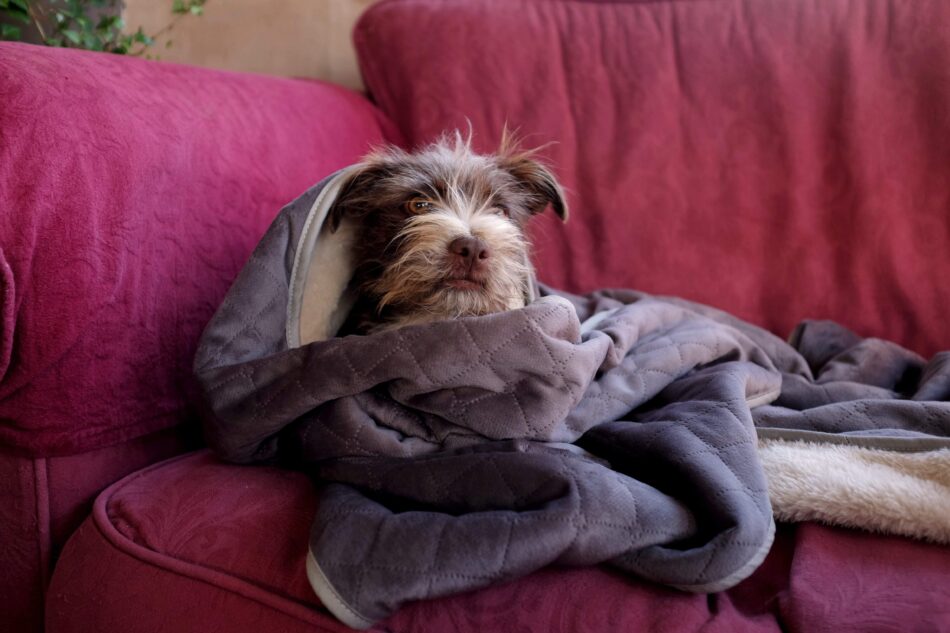
Whether it’s homemade treats, new toys or a long game of fetch that makes you late for work, there are many ways to show your dog how much you love them. But are you spoiling them? Probably. Does it matter? Probably not.
These are 20 tell-tale signs that suggest you’re spoiling your furry friend.
1.
There’s nothing in the snack cupboard except dog treats. That’s good, as it means you’re not feeding all the treats at once; but it’s not so good if you were looking for a crafty snack of your own…
2.
You’ve gone to the pet shop with your dog, and you’re letting them ‘choose’ the toys and chews they want. So far, you have a very full basket!
3.
You buy a bigger, better sprinkler for the garden just because your dog had such fun with the old one. The lawn doesn’t actually need the extra water at the moment, but your dog does!
4.
You buy a new squeaky toy to play tug-of-war with, even though the old ones are still in good shape. After all, this is the first time your pet has had a toy shaped like a lobster…
5.
You realise you’re looking forward to your dog’s day at the Puppy Spa next week as much as you’re looking forward to your romantic stay in a spa hotel the following weekend.
6.
Your bags of dog treats have healthier ingredients than your own treats – all organic, sustainably sourced, and packed with vitamins and minerals.
7.
Your afternoon dedicated to DIY has disappeared, dedicated instead to giving belly rubs, playing with sticks and balls, and going for a long, leisurely walk in the park to say hello to the ducks.
8.
The freezer has lots of yummy frozen doggy treats, but no ice creams or lollies for you and the kids.
9.
You’ve spent two hours in the kitchen baking. The result? Several trays of dog biscuits for your pet and all his doggy friends in the neighbourhood.
10.
You’re sitting on the not-very-comfy chair, because your dog is curled up on the comfier one.
11.
You’re not particularly enjoying the show on TV, but you keep it on because it’s your dog’s favourite.
12.
You buy toys and treats for your dog’s birthday or for their Christmas stocking – and hide them away on a high shelf to keep them secret until the big day.
13.
You phone home on a business trip, and your first question is “How’s the dog?”
14.
You’re an expert in dog massage and essential oils for dogs, but don’t know much about massage and essential oils for humans.
15.
You give your dog its dinner slightly early so that you can both sit down and watch the new Scooby Doo or Lassie film together later.
16.
Your dog’s annual hairdresser bill is bigger than yours.
17.
You have a list of all the local dog-friendly restaurants in your neighbourhood, and compile one for all the places you visit with your pet.
18.
Your dog’s ‘room’ under the stairs was planned and decorated with more care than your living room.
19.
You decide not to offload your bad day on the dog, because you don’t want them to worry.
20.
You’ve taken a trip to the seaside with your dog yet again. You hadn’t intended coming back so soon, but the dog insisted…
As long as it doesn’t involve overeating, over-fussing or over-exercising, there are all kinds of ways to spoil your dog. And the great thing is, the dog won’t feel spoilt at all, just loved.
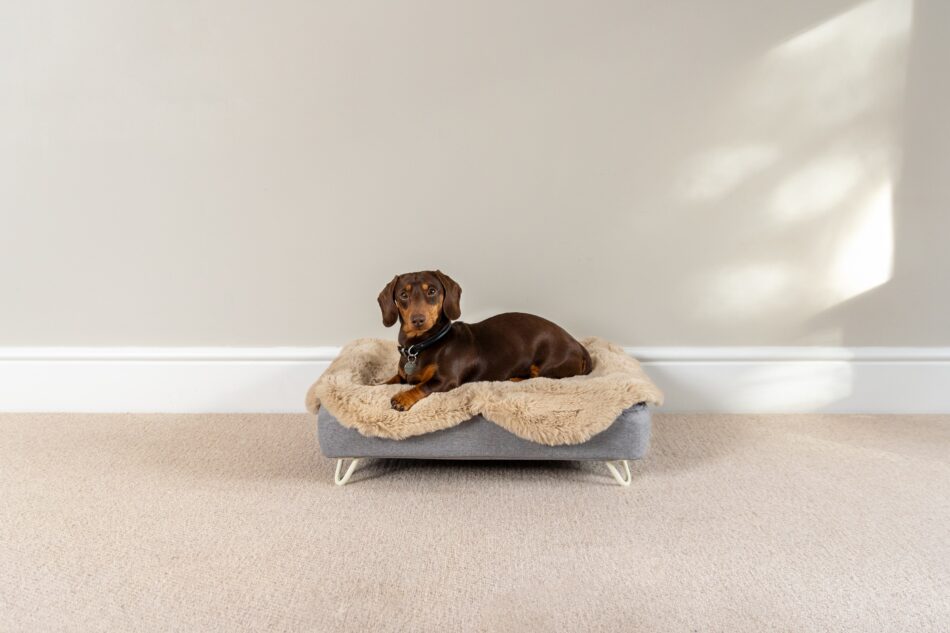
This entry was posted in Dogs on July 27th, 2020 by linnearask
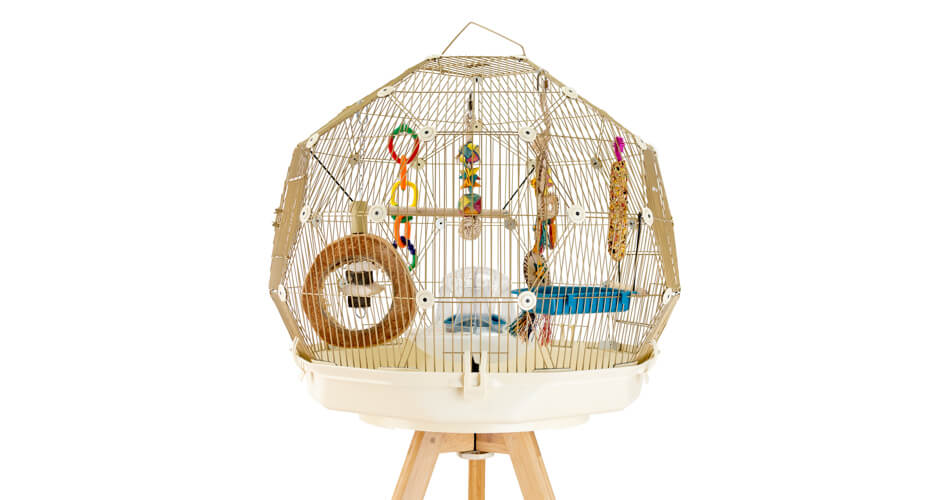
Budgies need toys, so much so that they should be an essential part of your birds’ setup, only just behind food and water on the priority list. Toys provide them with physical and mental stimulation, as well as a lot of fun.
Budgies love to fly, climb, jump, swing and flap, and to explore their environment using both beak and feet. As an owner you will need to make sure you provide toys that fulfil all of these needs. In the picture above we have packed the cage full with perches and toys, but it is usually better to stick to maybe two or three toys in the cage at a time and swap them regularly. You don’t need to get new toys every time as the budgie won’t remember what toys he or she played with two weeks ago, but variety is certainly the spice of life when it comes to budgie toys.
Also, remember that budgies can and should have toys outside the cage for when they are free flying. Make sure everything you give your bird is safe; avoid anything sharp, things with gaps or hoops where a foot or a beak could get stuck, or that would be dangerous for the budgie to ingest bits of.
After a while you’ll probably work out what toys seem to excite your pets the most, but you might have to try a few things before you figure it out. If it seems your budgies don’t like a toy you’ve got for them, it’s worth taking it away and reintroducing it a few days later. Your bird might very well be super excited about the same toy on a different day.
We’ve filled a Geo Bird Cage with some of our favourite toys from the Omlet shop that we know the office budgies go crazy for. Hopefully yours will too!
While perches are not always seen as toys, they are essential to any budgie set up. Without perches your pets will have nowhere to roost at night, but will also be deprived of a lot of entertainment. Sitting holding a wooden stick might not be your idea of fun, but birds love them, and you should always make sure you have a few perches in the cage.
Budgies have excellent colour vision, and colourful toys are normally a big hit. Maybe something like the Classic Fruity Swing Rings, hanging fruit shaped rings that your pet will love climbing up, swinging on and pecking at. It will look cheerful in the cage, and adds an interactive challenge for your budgie, who will also love playing with the attached bell.
The Woven Wonders hanging toys provide great entertainment and intriguing exploring for your budgies. Birds love to chew as they play, and these toys are designed to be durable but shreddable, mimicking the things the budgie might have played with in the wild. We’ve chosen the comet and the dreamcatcher to provide the budgie with colourful toys to swing in and climb on, as well as slowly break with their strong beak.
Your pet budgies will also love the Naturals Peck n Seed Swing. Not only is it a comfortable perch to rest the feet on, it swings gently when suspended from the roof of the cage and is covered in 16 different types of delicious seeds, berries and vegetables. Working out how to remove all the tasty goodies while swinging will keep your budgie happy and stimulated for hours.
Make your pets work for their treats with Vitapol Fruit Sticks. Jampacked with yummy seeds and fruits, it can easily be hung from the mesh in your cage, so your pets can climb close to it and peck away at the tasty stick. Treats should always be fed in moderation, but you don’t need to worry as much about it when you know your birds will have to work for the reward.
Last but not least is the Nature First Husk Puzzler. This hanging toy is designed to enrich your budgies’ environment and provide both physical and mental stimulation. The husk ring combined with braided seagrass and limestone shells is great for all senses, and will look impressive and intriguing in the cage.
This entry was posted in Budgies on July 21st, 2020 by linnearask
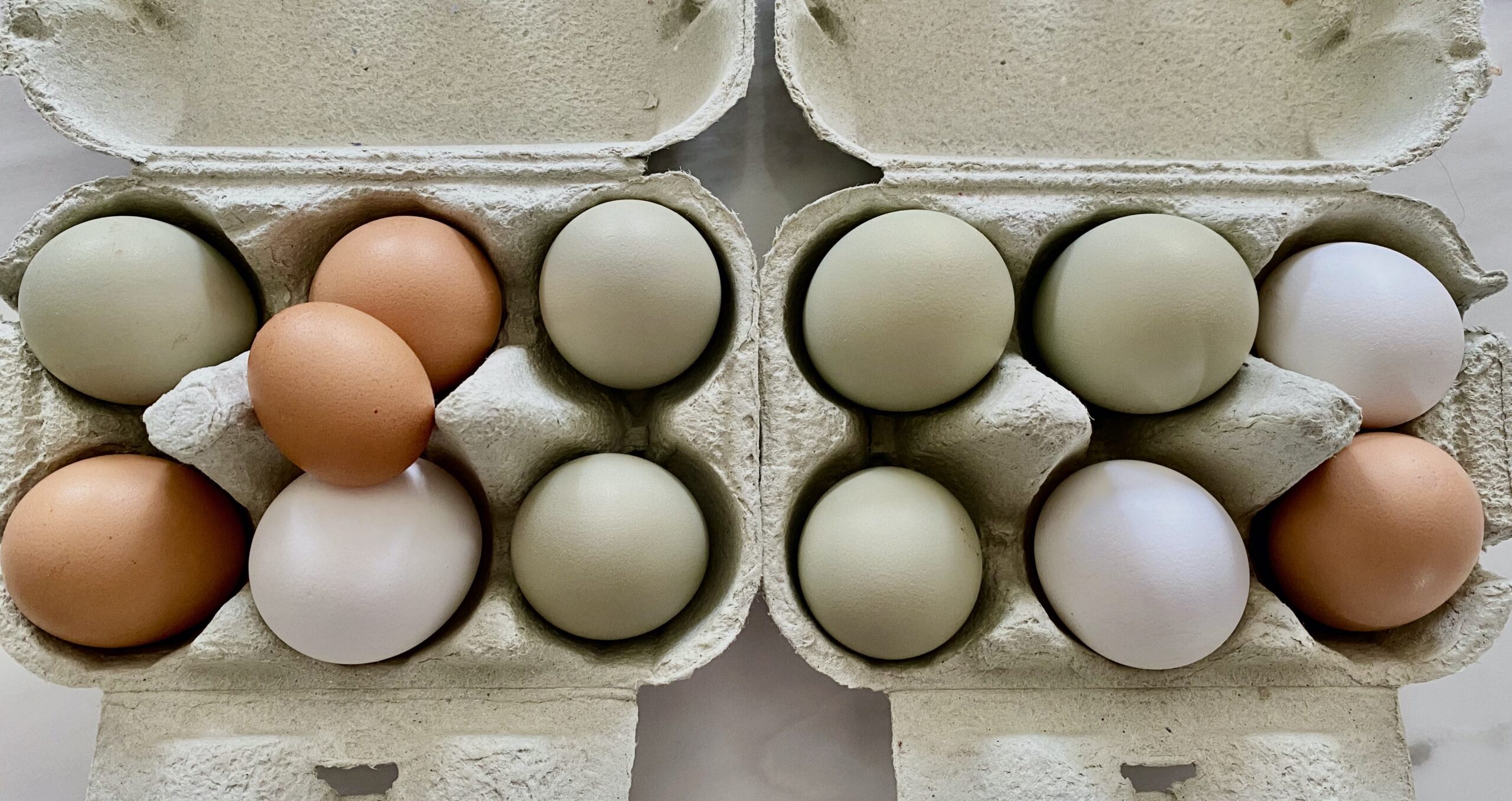
We are all used to the idea of fresh food being clean and chilled, so surely the best method of storing eggs is to wash and refrigerate them?
The answer is ‘no’. With a bit of ‘yes’ thrown in. Although the collective knowledge of chicken keepers is vast, there is still debate about the best way to store eggs.
We’ve gathered the various ends of the argument and summarised them below. Welcome to the debate!
Washed eggs?
Unless the eggs are soiled – which is the result of mud or chicken poo in the hen house, rather than dirt deposited during the actual laying – they do not need washing. A freshly laid egg has a shell covered in a protective ‘bloom’, called the cuticle, and this acts as an antibacterial defence system. If it’s washed off, the protection is washed off too. However, if the eggs are then stored in clean boxes, this won’t be a huge issue.
Eggs with dirty shells should be wiped clean, and it’s a good idea to use these soiled ones first – mainly to keep the egg box or egg-skelter looking pretty!
Chilled eggs?
Some chicken keepers keep their eggs in a refrigerator, while others believe this is unnecessary. So what’s the best advice?
There are two rules of thumb – keep them below 20°C, and keep them away from strong odours, as these may affect the flavour. Other than that, it’s really up to you.
A study was carried out in 2013 by Food Test Laboratories in England, comparing the fate of two batches of supermarket eggs. The eggs were kept for two weeks, half of them in the fridge, and the other half at room temperature.
The eggs were tested for ‘usual suspect’ bacteria such as salmonella and listeria, at the beginning of the experiment and two weeks later. The results demonstrated why there is such divided opinion on the issue, as neither sets of eggs showed any signs of bacterial nasties, inside or out.
It’s the cuticle ‘bloom’ that keeps the eggs fresh and bacteria-free. If you’ve had to wash them, it’s probably a good idea to refrigerate them, as the shells will not be protected. Keep them in boxes on the fridge shelves, rather than in a fitted plastic egg tray in the fridge door (formerly a regular feature in new refrigerators).
Eggs don’t like being shaken, as it causes the egg whites to deteriorate and turn slightly watery. An egg that’s shaken by the constant opening of the fridge door is likely to lose its binding qualities in baking, and will look very sad, flat and watery in the poaching or frying pan. Fridge doors are the warmest part of the appliance too, and the area of the fridge where temperature fluctuates the most, which isn’t ideal for egg storage.
Egg basket or box?
Eggs kept outside the fridge can be stacked in boxes, with the oldest ones in the topmost boxes. This age factor is less easy to sort out if you keep the eggs in a wire basket, although these look great on display. Some chicken owners use colour coding dots, or even dates, to sort the young from the old. If you’re unsure about relative age, you can always use the traditional ageing method: place the eggs in a bowl of water, and watch how they sit. Very fresh ones will lie flat on the bottom, while older ones will have their pointed ends raised. Ones that are way past their use-by date will float.
Another advantage of egg boxes is that you can store the eggs with their rounded ends at the top. This keeps the yolks centred, which makes them look their best if you’re hard- or soft-boiling. However, if most of your eggs end up in cakes and quiches, this isn’t going to be an issue.
An egg skelter is another attractive way of storing the fruits of your hens’ labours. These keep the eggs in age-order, and they look great too.
Storing shelled eggs?
Any leftover raw egg can be stored in the fridge in an airtight container. It should be used within three days. Stored yolks should be covered in water to prevent them drying out. The water can be poured away before use.
Uneaten cooked eggs (i.e. hard-boiled) will always leave an ‘eggy’ whiff in the fridge. This is caused by hydrogen sulphide, a gas that forms when eggs are cooked (you’ll notice it’s never present in raw eggs). Although not exactly pleasant, the gas is harmless. Eggs stored in this way should be eaten within one week.
So, the main takeaway here is that eggs can be stored wherever you want them to be stored. As long as you keep them away from heat, strong odours and too much shaking, you’ve got the storage conundrum cracked!
This entry was posted in Chickens on July 12th, 2020 by linnearask
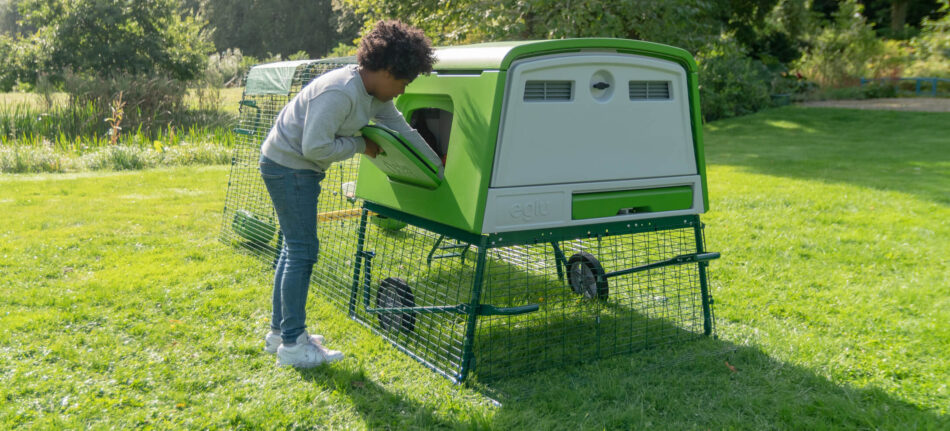
Wondering how to keep your chickens cool in summer? The longer, warmer days are upon us, and pretty soon your hens will start feeling the heat. Overheating and heat stress are real concerns this time of year. We’ve compiled tips and tricks to help you combat the heat and keep your hens safe this season.
Keep your chickens’ coop cool
Keeping your chickens’ coop cool by moving it into a shady spot in your garden is one of the best ways to keep them cool. This could be under a tree or on a side of your house that doesn’t get as much sun. The Eglu chicken coops are so easy to move that you can effortlessly relocate your garden flock as the sun moves. Omlet coops also utilize draft-free ventilation to help to keep your hens cool.
Change the water at least once a day
Your chickens will drink more in summer in an effort to stay hydrated. To keep their water fresh and cool, change the water in your flock’s chicken drinker at least once a day during the hot summer months. Place the drinker in a cool, shady spot in the run to help keep algae levels and water temperature down. Try adding ice cubes to their waterer several times a day during especially hot days.
What to feed chickens in summer
Dried corn and grains take longer to digest than pellets or fresh food, which increases your hens’ metabolism and heats their bodies. Chickens will not need to eat as much in hot weather, but your garden will be full of bugs and vegetation this time of year when they feel the need to eat.
Watch your chickens closely
Hens can overheat quickly in hot weather, so it’s important to not leave them unattended for more than a few hours a day. Summer is usually a time for families to travel, but be sure to get a chicken sitter for your flock when you go out of town. Your flock will be drinking a lot more water as the weather heats up, so refreshing their water at least every 8-10 hours is a necessity to keep it fresh and cool.
In the warmer weather, it’s especially important to watch for signs of heat stress. Keep an eye out for signs of overheating, like:
- Open mouth panting
- Lethargy
- Loss of appetite
- Droopy appearance or uncoordinated movements
Any overheated hens should be removed from the coop and placed in a cooler area. Don’t cool your chicken down too quickly, as they can go into shock. Call your veterinarian about any severely dehydrated or overheated hens.
Cover their run, but not completely
Covering your chicken run might seem like a good idea to create a shady spot, but if you don’t let air circulate, it’s likely to become a balmy tunnel of warm air. It’s important to have ventilation so that fresh air can move around. Cover part of your flock’s run to offer a shady area, but be sure to leave plenty of uncovered space for breezes. Our green chicken run covers block the sun to give your hens ample shade in their run.
Our Eglu chicken coops’ ingeniously designed ventilation system allows air to circulate in the coop at all times — keeping it cool and fresh even on the hottest days. This method works much better than wooden chicken coops.
Postpone playtime
Interaction with the chickens might lead to more movement for them, which increases their body temperature. If you want to spend time with your chickens or need to pick them up for health checks, plan to do so early in the morning or late at night when it’s cooler.
All chickens are different
Some chicken breeds aren’t as heat-hardy and will need additional support in the summer months. Keep a close eye on breeds like Polish or Silkies in the heat, as their head plumage can prevent them from seeing water sources easily. Keep plenty of water at multiple levels around the run to ensure your hens always have access to fresh water.
Can chickens get wet in summer?
Chickens don’t mind a light sprinkle, but saturated feathers can be dangerous. Wet feathers get weighed down and don’t allow for airflow. Hens will fluff out their feathers to create a layer of insulation against both the heat and cold — much like the technology that our Eglu coops employ. Don’t hose your hens down in the heat, but instead offer ice packs in their coop or nesting areas for them to lay next to.
Do chickens stop laying eggs in summer?
You’ll probably get fewer eggs than normal during the warmest weeks of the year. This is completely normal — chickens won’t lay as much when they are hot, and some may go broody and stop laying completely. Although the eggs won’t go bad if you leave them in the nest box of an Eglu for a day, eggs in the nest can encourage broodiness and result in egg eating. It’s a good habit to collect all eggs daily.
Should I clean my coop more in summer?
It’s always important to keep the coop nice and clean for your hens, but even more so in summer. Parasites and pests are more prevalent when it’s warmer, but make sure to use a chicken-safe disinfectant and dust roosting bars with parasite powder to keep pests at bay. Eglu chicken coops can be cleaned quickly and easily to diminish the presence of parasites. Simply pressure wash and dry with a clean rag to have a sparkling clean, mite-free coop in minutes. Unless you have hens with an active mite infestation, Eglu chicken coops do not need to be treated for mites. If cleaned daily, the smooth plastic design of our Eglu chicken coops does not offer a hospitable environment for mites.
Keep chickens cool with Omlet
Make sure that your chickens are well-equipped for any season with Omlet’s range of chicken products. Keep frozen treats in our chicken treat dispensers to make summer days more bearable, and offer shady spots with chicken run covers. With our expertly crafted chicken products, your flock will be safe and comfortable all year round.
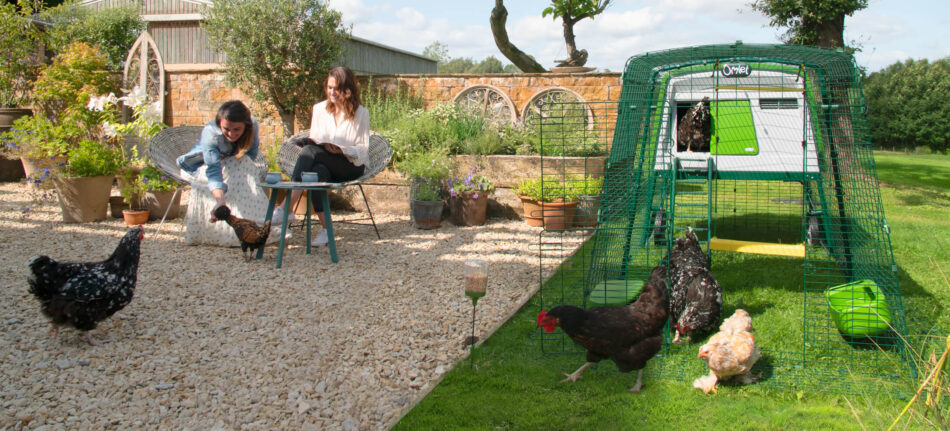

This entry was posted in Chickens on July 8th, 2020 by linnearask
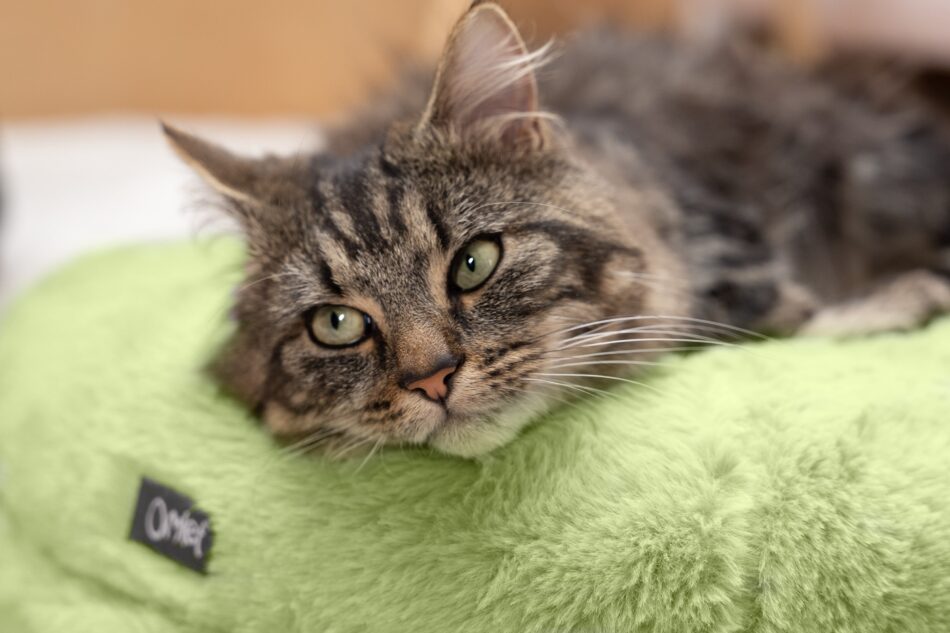
1.
If you have problems with your cat eating their food too quickly, try changing their food bowl to a larger, shallow plate. This will slow them down significantly as they have to take smaller mouthfuls, which minimises the risk of the food coming back up again.
2.
If you’re worried your cat doesn’t drink enough water, try putting the water bowl in a different spot to where they get fed. In the wild, cats will not drink at the same place as they eat to avoid the meat contaminating the water, and this behaviour lives on with some pet cats.
3.
Does your cat rub against your laptop or try to sit on the keyboard as you’re trying to work from home? Bring out the best cat toy of all time, the cardboard box! Place a box on your desk and most cats will forget about you and happily play or curl up in the box.
4.
Try freezing some of the treats you give to your cat. The unusual texture and temperature of the treat will stimulate several of the cat’s senses and encourage explorative play. This is especially good in summer when the cat will love the cooling effect even more.
5.
If you want to keep your cat off the kitchen counter, a new sofa or an expensive side table, put some double sided tape over the surface where the cat’s sharp claws would cause damage. Cats hate the feeling of the sticky tape, and will quickly learn to avoid these spots. At that point you can remove the tape.
6.
The best way to avoid cat hair all over the house is to get on top of grooming and brush your cat regularly, preferably daily. It doesn’t only decrease unwanted shedding, it also helps the cat groom itself and prevents matted fur and hairballs. Get a brush that suits your cat’s type of hair and make it a lovely time of the day together with your cat.
7.
For fur that has gathered on rugs and upholstery, put on a rubber glove and run your hand over the surface to gather up pet hair. Shower squeegees can also be useful for this task!
8.
Potted plants sometimes become alternative litter boxes, which is neither nice nor very good for the plant. To stop your cat from going in the pot, cover the soil with a layer of pine cones. These blend in nicely, but will put your feline friend off.
9.
One of the best ways of stimulating an indoor cat is to give them a place to climb. If you haven’t got enough space for a large climbing station, put up some shelves that the cat can explore.
10.
No matter how much you groom your cat and make sure the house is nice and clean, the cat’s bed will still be exposed to a lot of hair and dirt. Make sure you get a cat bed with a machine washable cover that can be cleaned over and over again without fading or weakening. The Omlet Bolster Cat Beds with a super comfortable memory foam mattress are a perfect solution for all cat owners.

This entry was posted in Cats on July 7th, 2020 by linnearask



 Don’t Drink the Water
Don’t Drink the Water




